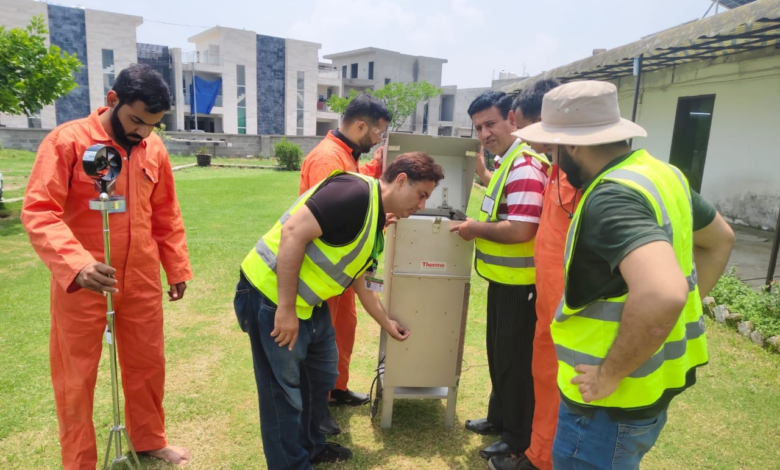Environmental Law News: Current Issues and Updates
Environmental law updates on recent legislative changes, key court decisions, and international agreements shaping current environmental issues.

Understanding how laws and court decisions affect our interaction with the environment requires knowledge of environmental law news. It is more crucial than ever to stay up to date on environmental law changes and current topics because of the mounting challenges posed by pollution, climate change, and the need for sustainable practices. This article provides a thorough overview of the changing legal landscape by examining recent legislative developments, important court rulings, and noteworthy acts made by governmental agencies. We may gain a better understanding of the ramifications for communities, businesses, and the worldwide effort to safeguard the environment by looking at these themes.
As technology advances and new environmental challenges arise, environmental regulations are always changing. The legal system around environmental protection is complex and ever-changing, ranging from global accords like the Paris Agreement to local government initiatives. In addition to providing insights into how these changes affect different stakeholders, this article attempts to shed light on the most important current concerns and recent advancements in environmental legislation. We can participate in educated debates and push for laws that support a sustainable and healthy environment for coming generations if we keep ourselves informed.
Environmental Law News
Climate Change Legislation
Climate change remains at the forefront of environmental law. Recent bills, such as the Climate Action Now Act in the U.S., aim to reduce greenhouse gas emissions and promote renewable energy. These laws have significant implications for industries, particularly those reliant on fossil fuels. For example, the energy sector must now navigate stricter regulations and invest more in sustainable practices to comply with new standards.
Renewable Energy Policies
Governments worldwide are introducing policies to incentivize renewable energy. Tax credits, subsidies, and grants are making green energy more accessible and affordable. Notable examples include Germany’s Renewable Energy Sources Act, which has successfully increased the share of renewable energy in the country’s power grid. These policies not only combat climate change but also stimulate economic growth by creating green jobs.
Key Court Decisions
Landmark Cases
Several landmark cases have recently shaped the field of environmental law. One notable case is Massachusetts v. EPA, where the U.S. Supreme Court recognized the authority of the Environmental Protection Agency (EPA) to regulate greenhouse gases. This decision set a precedent for future regulatory actions and underscored the judiciary’s role in environmental protection.
Ongoing Legal Battles
High-profile cases, such as Juliana v. United States, continue to make headlines. This case, brought by young plaintiffs, argues that the government’s failure to address climate change violates their constitutional rights. The outcome of such cases could have far-reaching implications for environmental policy and climate litigation.
International Environmental Agreements
Paris Agreement Updates
The Paris Agreement remains a cornerstone of global climate policy. Recent developments include renewed commitments from countries like the U.S., which rejoined the agreement and pledged to achieve net-zero emissions by 2050. These commitments are crucial for global cooperation in tackling climate change.
New International Treaties
Emerging treaties, such as the Kigali Amendment to the Montreal Protocol, aim to phase down hydrofluorocarbons (HFCs), potent greenhouse gases used in refrigeration and air conditioning. These international efforts highlight the importance of global partnerships in addressing environmental issues.
Environmental Protection Agency (EPA) Actions
Regulatory Changes
The EPA continues to introduce new regulations to protect the environment. Recent changes include stricter emissions standards for vehicles and power plants. These regulations are designed to reduce pollution and promote cleaner air and water.
Enforcement and Compliance
The EPA’s enforcement actions are crucial for ensuring compliance with environmental laws. Notable cases include penalties against companies violating the Clean Air Act. These actions send a strong message that non-compliance will not be tolerated, encouraging businesses to adopt more sustainable practices.
State and Local Government Initiatives
Innovative State Laws
States are often at the forefront of environmental innovation. California’s cap-and-trade program, for instance, sets a limit on greenhouse gas emissions and allows companies to buy and sell allowances. This market-based approach has proven effective in reducing emissions while promoting economic flexibility.
Local Government Programs
Local governments play a vital role in environmental protection. Programs like New York City’s Green Infrastructure Plan aim to manage stormwater runoff through sustainable methods. Community engagement and support are key to the success of such initiatives, demonstrating the power of local action in achieving environmental goals.
Public and Corporate Response
Public Opinion and Activism
Public opinion and activism are driving forces behind environmental law. Movements like Fridays for Future, led by Greta Thunberg, have raised global awareness and pressured governments to act. Public participation in environmental decision-making processes ensures that laws reflect societal values and priorities.
Corporate Environmental Responsibility
Many corporations are stepping up their sustainability efforts in response to public demand and regulatory pressure. Companies like Patagonia and Tesla are leading the way with innovative practices and products that minimize environmental impact. These case studies show that corporate responsibility can align with profitability.
Technological Advances and Environmental Law
Role of Technology in Compliance
Technology plays a critical role in helping businesses comply with environmental laws. Innovations like pollution control devices, real-time monitoring systems, and data analytics are making it easier to track and reduce environmental impact. These technologies enhance regulatory compliance and promote transparency.
Future Technologies to Watch
Emerging technologies, such as carbon capture and storage (CCS) and renewable energy advancements, hold promise for the future. These innovations could significantly reduce greenhouse gas emissions and support global sustainability goals. However, they also present new legal challenges that must be addressed.
Challenges in Environmental Law Enforcement
Regulatory Gaps
Despite progress, there are still gaps in environmental regulations. Areas like plastic pollution and emerging contaminants lack comprehensive legal frameworks. These gaps can lead to environmental harm and highlight the need for continuous legal evolution.
Enforcement Difficulties
Enforcing environmental laws is often challenging due to limited resources and complex regulatory environments. Overcoming these barriers requires robust legal frameworks, adequate funding, and cooperation between governmental agencies, businesses, and communities.
Future Trends in Environmental Law
Predicted Legislative Changes
Experts predict that future legislative changes will focus on issues like climate resilience, biodiversity protection, and sustainable development. These areas will likely see increased regulation as the global community continues to prioritize environmental sustainability.
Evolving Role of Environmental Law
The role of environmental law is evolving to address new challenges and opportunities. This evolution includes a greater emphasis on interdisciplinary approaches, integrating science, economics, and social considerations into legal frameworks to achieve long-term environmental goals.
Read More: How to Find a Reliable General Practice Clinic Near You
Conclusion
News on environmental law is still essential to our group’s efforts to protect the environment. The article’s discussion of significant court rulings, international accords, and new legislative developments emphasises how dynamic and complex environmental law is. To maintain compliance with regulations aimed at conserving our natural resources and to navigate the complicated legal landscape, it is imperative that businesses, lawmakers, and the public understand these developments. Keeping up with the most recent legal developments enables us to support stronger and more successful environmental policies as we continue to face urgent environmental issues.
The continuous development of environmental law is a reflection of the growing awareness of the pressing need for climate action and sustainable practices. Public opinion, business responsibility, and technological breakthroughs are the main factors influencing how environmental regulations will develop in the future. We have the ability to actively contribute to the creation of a sustainable future by staying up to speed on concerns and updates. The preservation of the earth for future generations will greatly depend on our collaborative efforts to comprehend and abide by environmental rules, whether through individual activities, corporate initiatives, or national regulations.
FAQs
What is the biggest challenge in enforcing environmental laws?
The biggest challenge is often the lack of resources and coordination among enforcement agencies, which can hinder effective monitoring and compliance.
How can businesses stay compliant with new environmental regulations?
Businesses can stay compliant by investing in technology, staying informed about regulatory changes, and adopting sustainable practices that go beyond mere compliance.
What recent court decisions have significantly impacted environmental law?
Decisions like Massachusetts v. EPA and ongoing cases like Juliana v. United States have set important precedents and will continue to shape the field.
How are international agreements shaping domestic environmental policies?
International agreements like the Paris Agreement influence domestic policies by setting global standards and encouraging countries to adopt more stringent environmental measures.
What role does technology play in modern environmental law enforcement?
Technology aids in compliance by providing tools for monitoring, data analysis, and pollution control, making it easier for businesses and regulators to track and mitigate environmental impact.











